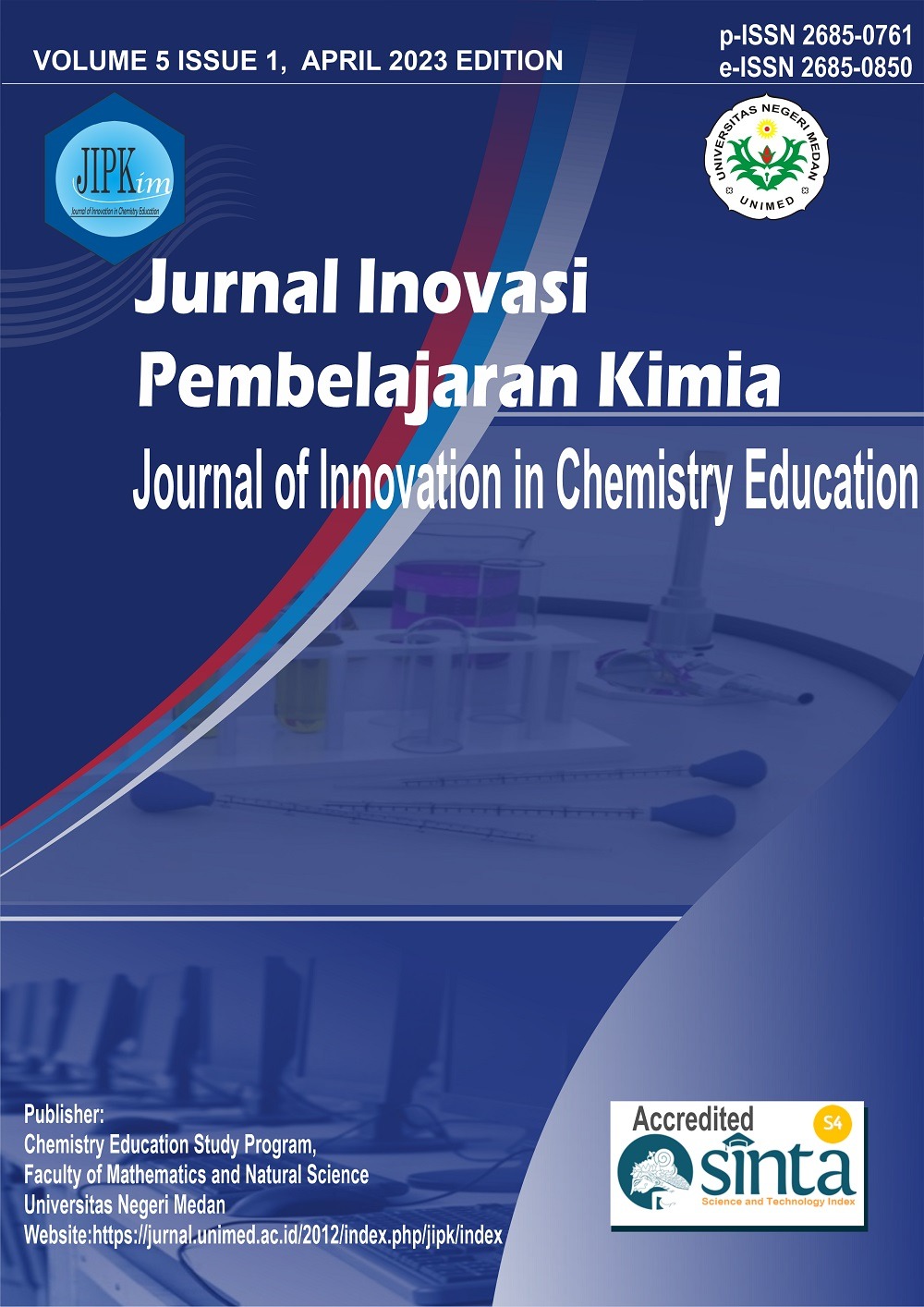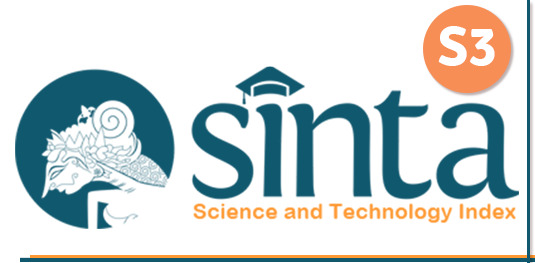Development of Project-Based Learning Modules on the Subject of Chemical Equilibrium
DOI:
https://doi.org/10.24114/jipk.v5i1.44030Keywords:
module, project based learning, validation results, responsesAbstract
This study aims to determine the feasibility of project-based learning modules on the subject of chemical equilibrium in accordance with BNSP requirements, which include: (1) Content Feasibility, (2) Presentation Feasibility, (3) Language Eligibility, and (4) Graphic Feasibility, this research also aims to determine student responses to project-based learning modules on the subject of chemical equilibrium. This research was developed using the Research & Development (R&D) method using the ADDIE development model. This research was conducted at Medan State University (UNIMED) and SMA Negeri 6 Binjai. The results of this study indicate that through the development of project-based learning modules on the subject of chemical equilibrium: (1) Average content eligibility by lecturers is 3.7 and by teachers 3.8., (2) Average eligibility presentation by lecturers is 3, 6 and by the teacher 3.7., (3) The average of language proficiency by the lecturer is 3.5 and by the teacher 3.7., (4) The average graphic proficiency by the lecturer is 3.9 and by the teacher 3.8. And the average result of student responses is 3.73. This means that the learning module that has been developed is feasible and does not need to be revised.References
Aditia, M, T. dan Muspiroh, N. (2013). Pengembangan Modul Pembelajaran Berbasis Sains, Lingkungan, Teknologi, Masyarakat dan Islam (Saling Temasis) Dalam Meningkatkan Hasil Belajar Siswa Pada Konsep Ekosistem Kelas X di SMA NU (Nahdatul Ulama) Lemahabang Kabupaten Cirebon. Jurnal Scientiae Education. 2 (2).
Amin, S. (2013). Tinjauan Keunggulaan dan Kelemahan Penerapan Kurikulum 2013 Tingkat SD/MI. Al Bidayah. 5 (2). 261-279
Bhawanayani, L. P., Rati, N. W., Putu, L., Mahadewi, P., Ganesha, P., & Buleleng, K. (2018). Pengaruh Model Project based learning Bermediakan Couple Card Terhadap. 8(2), 65“73.
Dinda, N. U., & Sukma, E. (2021). Analisis Langkah-Langkah Model Project Based Learning (PjBL) Pada Pembelajaran Tematik Terpadu di Sekolah Dasar Menurut Pandangan Para Ahli (Studi Literatur). Journal of Basic Education Studies, 4(2), 44-62.
Joyce, B & Weil, M. (2000). Models of Teaching. 5th Ed. Boston: Allyn and Bacon. Lasmiyati. Dan Harta, I. (2004). Pengembangan Modul Pembelajaran Untuk Meningkatkan Pemahaman Konsep dan Minat SMP. Jurnal Pendidikan Matematika. 9 (2). 161-174.
Karina, D., Yulita, I., & Ramdhani, E. P. (2019). Pengembangan media pembelajaran ular tangga kimia (ULTAKIM) berbasis kemaritiman pada materi hakikat ilmu kimia. Jurnal Zarah, 7(1), 13- 16.
Purba, J., & Fitri, R. A. (2021). Pengembangan Bahan Ajar Kimia Berbasis Proyek dengan Multimedia pada Materi Alkena di Sekolah Menengah Atas. Jurnal Inovasi Pembelajaran Kimia (Journal Of Innovation in Chemistry Education), 3(1), 56-65.
Setyowati, E. (2021). Upaya Meningkatkan Motivasi Belajar Dan Pemahaman Konsep Tekanan Melalui Penerapan Model Pembelajaran Projectbased Learning (Pjbl) Berbantuan Media Zoom Pada Siswa Kelas Viii.2 Smp Negeri 21 Kota Bekasi Tahun Ajaran 2020-2021. Jurnal Pedagogiana, 9(8). https://doi.org/10.47601/ajp.79
Susilo, A. Siswandari. dan Bandi. (2016). Pengembangan Modul Berbasis Pembelajaran Saintifik Untuk Peningkatan Kemampuan Mencipta Siswa Dalam Proses Pembelajaran Akuntanasi Siswa Kelas XII SMAN 1 Nogohimo 2014. Jurnal Pendidikan Ilmu Sosial. 26 (1). 50-56
Wahyuni, H, I. dan Puspasari, D. (2017). Pengembangan Modul Pembelajaran Berbasis Kurikulum 2013 Kompetensi Dasar Mengemukakan Daftar Untuk Kepangkatan dan Mengemukakan Peraturan Cuti. JPEKA. 1 (1). 54-68.













